GHS
The Globally Harmonized System of Classification and Labelling of Chemicals
The Globally Harmonized System of Classification and Labelling of Chemicals, developed by the United Nations and commonly referred to as the “GHS”, is an internationally harmonized approach to classifying and labelling of chemicals, and conveys the hazards associated with a chemical in a standardised way. The need for GHS arose because of the global trade of chemicals, which often cross boundaries into areas with different languages and varying levels of literacy, thereby creating challenges when communicating safe and responsible usage instructions of the products. It is hoped that such an approach will contribute to the safe use, transport and disposal of chemicals, and assist countries in developing the appropriate infrastructure to control chemical exposures, and ultimately protect people and the environment. The most noticeable changes brought by GHS is the way in which the chemical is classified and how this information is conveyed to the user, resulting in changes to the labels and safety data sheets (SDS’s) of chemicals. It is important to note that even though the label and SDS of a chemical has changed, the hazards associated with the product did not change, only the way in which these hazards are communicated.
In South Africa, GHS became a legal requirement for all hazardous chemicals from September 2022 with the promulgation of “The Regulations for Hazardous Chemical Agents” No. R280 under the Occupational Health and Safety Act, 1993, on 29 March 2021. An extension for implementation was later provided to 30 September 2023, with these changes still being phased in. The requirement for GHS for agricultural remedies specifically, is also included in the “Regulations relating to agricultural remedies” promulgated on 25 August 2023 under the Fertilizer, Farm Feeds, Agricultural Remedies and Stock Remedies Act (Act 36 of 1947).
It is very important for farmers, farmworkers and anyone handling a chemical to understand how GHS works, because the hazards associated with a particular chemical, their nature and severity, are communicated through a number of elements, such as hazard statements, pictograms and signal words on both the label and the safety data sheet of the product. It is only when we understand the hazards associated with a chemical that we can effectively mitigate the risks.
First, let’s have a look at the classification criteria of these hazards. According to the GHS, the nature of a hazard is assigned according to a hazard class, of which there are currently 29. Seventeen (17) of these are physical hazard classes, such as oxidizing liquids, 10 are health hazard classes such as skin corrosion/irritation, and two are environmental hazard classes, namely hazardous to the aquatic environment or hazardous to the ozone layer. Not all of these hazard classes will be commonly associated with agricultural remedies, however.
Table 1: Hazard classes covered under the GHS
- Explosives
- Flammable gases
- Aerosols and chemicals under pressure
- Oxidizing gases
- Gases under pressure
- Flammable liquids
- Flammable solids
- Self-reactive substances and mixtures
- Pyrophoric liquids
- Pyrophoric solids
- Self-heating substances and mixtures
- Substances and mixtures which in contact with water emit flammable gases
- Oxidizing liquids
- Oxidizing solids
- Organic peroxides
- Corrosive to metals
- Desensitized explosives
- Acute toxicity
- Skin corrosion/irritation
- Serious eye damage/eye irritation
- Respiratory or skin sensitization
- Germ cell mutagenicity
- Carcinogenicity
- Reproductive toxicity
- Specific target organ toxicity – single exposure
- Specific target organ toxicity – repeated exposure
- Aspiration hazard
- Hazardous to the aquatic environment
- Hazardous to the ozone layer
Within these classes, the severity of the hazard is then allocated in terms of a hazard category expressed as a number, for instance category 1 would be the most severe. Category 2 would be less severe than category 1 but more severe than category 3, and so forth. Some of these categories are further sub-divided into divisions, which are expressed as a letter, i.e. A, B, C, etc.
For example, when considering the health hazard “carcinogenicity”, category 1 is a “known or presumed human carcinogen”, whereas category 2 is a “suspected human carcinogen”. Category 1 is however further divided into category 1A and category 1B; the former being known to have carcinogenic potential for humans and is largely based on human evidence, whereas the latter is presumed to have carcinogenic potential for humans and is largely based on animal evidence.
The GHS also uses hazard statements, pictograms and signal words to communicate the hazard of the chemical, as well as precautionary statements to mitigate any potential risks. These are all linked to the hazards that have been identified.
Hazard statements are phrases that describe the hazard/s as determined by the hazard classification. They start with the letter H followed by three numbers. For physical hazards, the statement will start with H2 (followed by two additional numbers), health hazards start with H3 and environmental hazards with H4, for example H300: Fatal if swallowed. These hazard statements appear both on the label as well as the safety data sheet, however the code (i.e. Hxxx) only needs to appear on the safety data sheet and not on the label.
For example, for the health hazard “Carcinogenicity”, the hazard statement for a category 1A or category 1B carcinogen is “H350: May cause cancer”. For a category 2 carcinogen, the hazard statement is “H351: Suspected of causing cancer”.
Precautionary statements are linked to the hazard statements and are used to explain how to handle these substances, as well as which precautions to take to ensure any risk associated with handling the product is mitigated. The precautionary statements are preceded by the letter P and three numbers that are also categorized according to type, similar to the hazard statements. For instance, general statements will start with P1 followed by two numbers, prevention statements with P2, response statements P3, storage statements P4 and disposal statements with P5, e.g P264: Wash hands thoroughly after handling. These statements appear on the product label and the safety data sheet. As with the hazard statements, the codes (i.e. Pxxx) are only required on the safety data sheet and not the label.
For example, for the health hazard “Carcinogenicity”, the following precautionary statements should be included on the product label and SDS:
-
Prevention
- P203: Obtain, read and follow all safety instructions before use.
- P280: Wear protective gloves/protective clothing/eye protection/face protection (whichever applicable based on usage instructions).
-
Response
- P318: IF exposed or concerned, get medical advice.
-
Storage
- P405: Store locked up.
-
Disposal
- P501: Dispose of contents/container in accordance with local regulations.
Based on the hazards identified and the corresponding categories and thus severity thereof, a signal word is used to describe the hazard. The signal word “Danger” is used to describe more severe hazards, and the signal word “Warning” is used to describe less severe hazards. A chemical will only include one signal word which will be the most severe signal word flagged during the hazard classification.
For example, if a mixture is classified as a category 1A carcinogen, the resulting signal word on the label should be “Danger”. The same mixture is also classified as being a category 1A skin sensitizer, for which the signal word “Warning” must be used. Because “Danger” is the most severe signal word flagged for the hazards associated with the chemical, “Danger” will be the final signal word included on the label.
A pictogram is a graphical representation of the hazards associated with the chemical and is associated with a specific hazard class and category. All pictograms prescribed by the GHS have a black symbol on a white background with a red frame. With the exception of the exclamation mark, all pictograms flagged by the hazard classification must always be included on the label and SDS of the chemical.
For example, if a chemical is classified as a category 1A carcinogen and a category 1A skin sensitizer, the health hazard pictogram is flagged by the former and the exclamation mark pictogram by the latter. Both the health hazard and exclamation mark pictograms will be included on the label and SDS. However, if the chemical was classified as a category 1 respiratory sensitizer, flagging the health hazard pictogram, and a category 1A skin sensitizer flagging the exclamation mark pictogram, the exclamation mark pictogram that was flagged for skin sensitization will not be included on the label and SDS, only the health hazard pictogram. Both these hazards relate to sensitization and the health hazard pictogram indicates a more severe sensitization hazard than the exclamation mark.
Table 2: Pictograms used by the GHS to indicate physical, health and environmental hazards
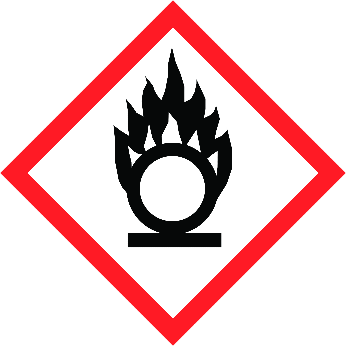
Oxidising
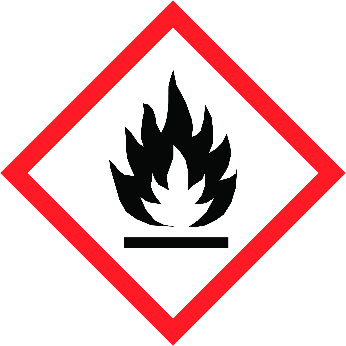
Flammable
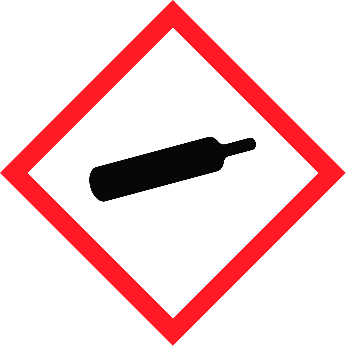
Chemicals under pressure
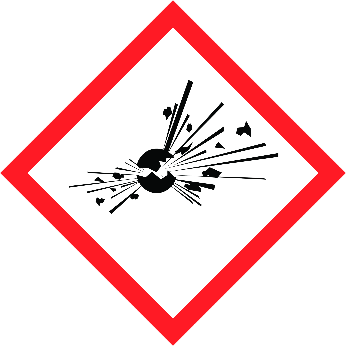
Explosive

Corrosive
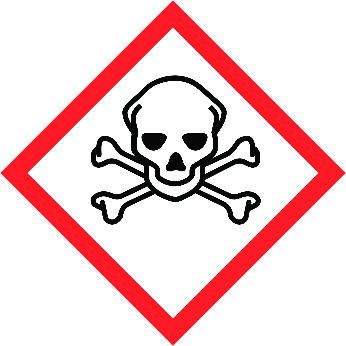
Acute Toxicity
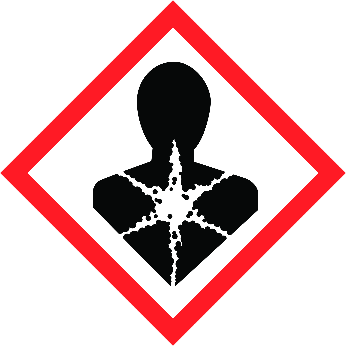
Health (chronic toxicity)

Exclamation Mark

Environment
In the past, agricultural remedies were classified and labelled according to the World Health Organization (WHO) recommended classification of pesticides by hazard. This system classified the remedy based on the acute oral and dermal toxicity of the active ingredient(s), which was reflected in the colour band at the bottom of the front panel of the label. Pictograms on the colour band provided information on the personal protective equipment required and general precautions to take when storing, handling, or applying the remedy. A corresponding word based on the severity of the toxicity was included on the colour band (Caution, Harmful or Toxic).
With the implementation of the GHS, the most noticeable change to the label of an agricultural remedy is the removal of the colour band and corresponding pictograms, and the inclusion of the GHS hazard pictograms, hazard statements and precautionary statements. The GHS covers more hazards than the previous WHO system and classifies the remedy based on physical, health and environmental hazards, not just acute toxicity, and considers the active ingredient(s) as well as the inert ingredients in the formulation. Consequently, the GHS is a lot more comprehensive in terms of hazard classification and communication than the WHO system.
As mentioned, it is important to note that even though the label and SDS of a chemical have changed, the hazards associated with the product did not change, only the way in which these hazards are communicated.

Figure 1: Example of an agricultural remedy label where the remedy has been classified and labelled according to the WHO recommended classification of pesticides by hazard.
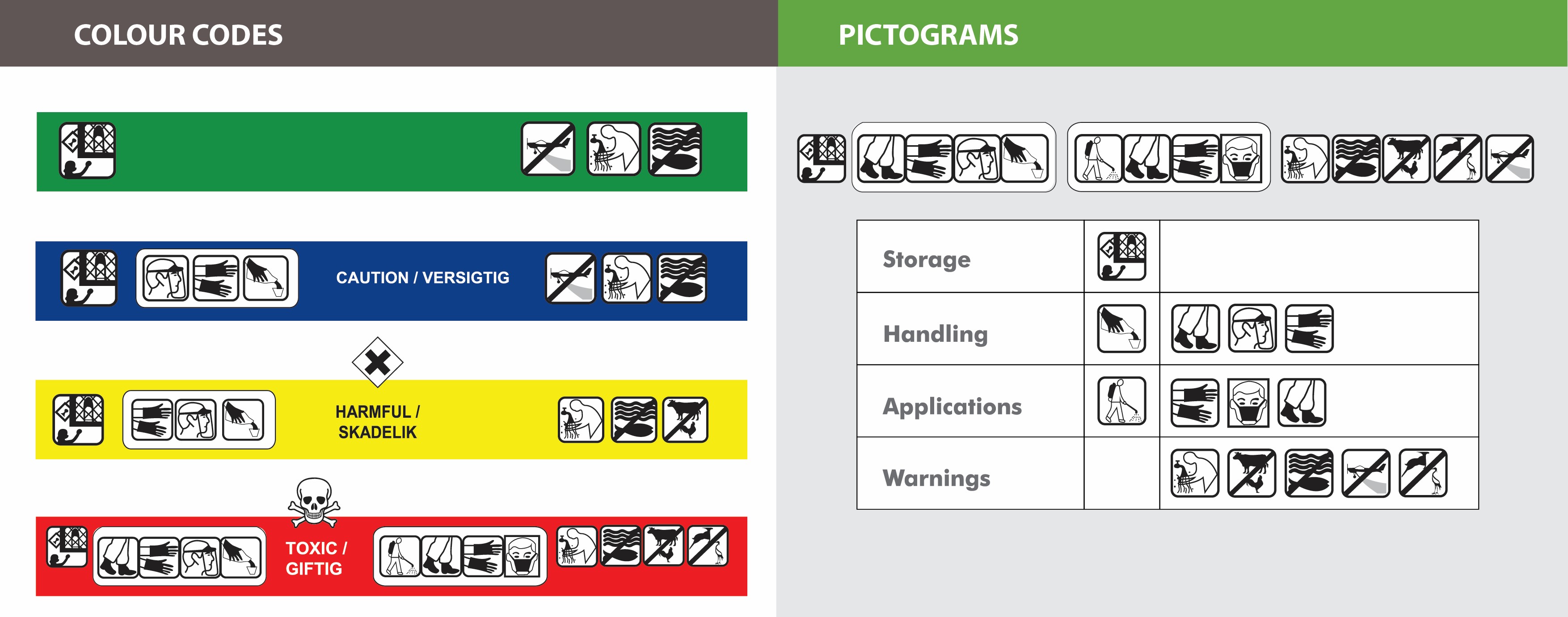
Figure 2: Example of the colour bands and pictograms used on agricultural remedy labels when using the WHO recommended classification of pesticides by hazard.
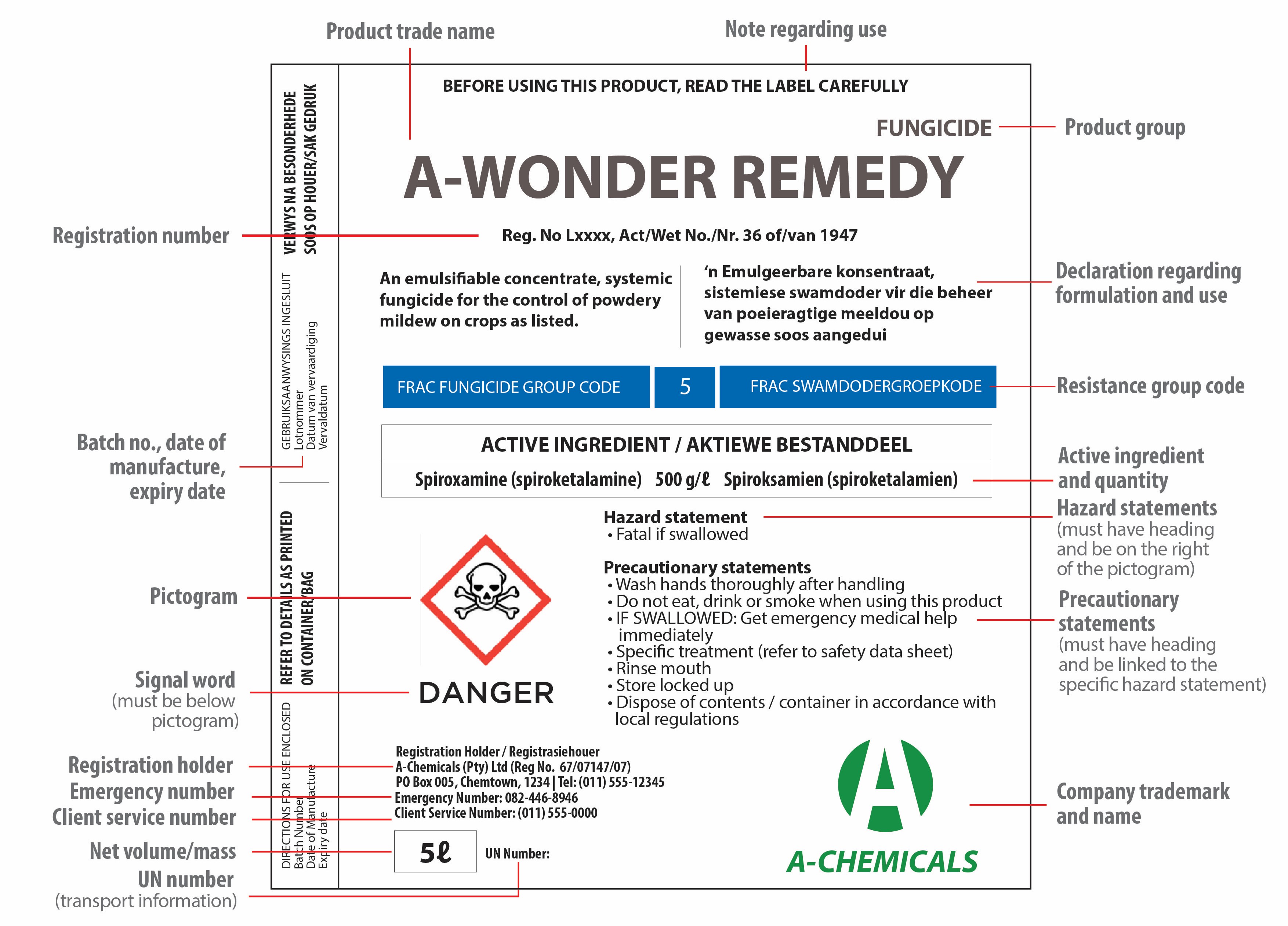
Figure 3: Example of an agricultural remedy label where the remedy has been classified and labelled according to the GHS.
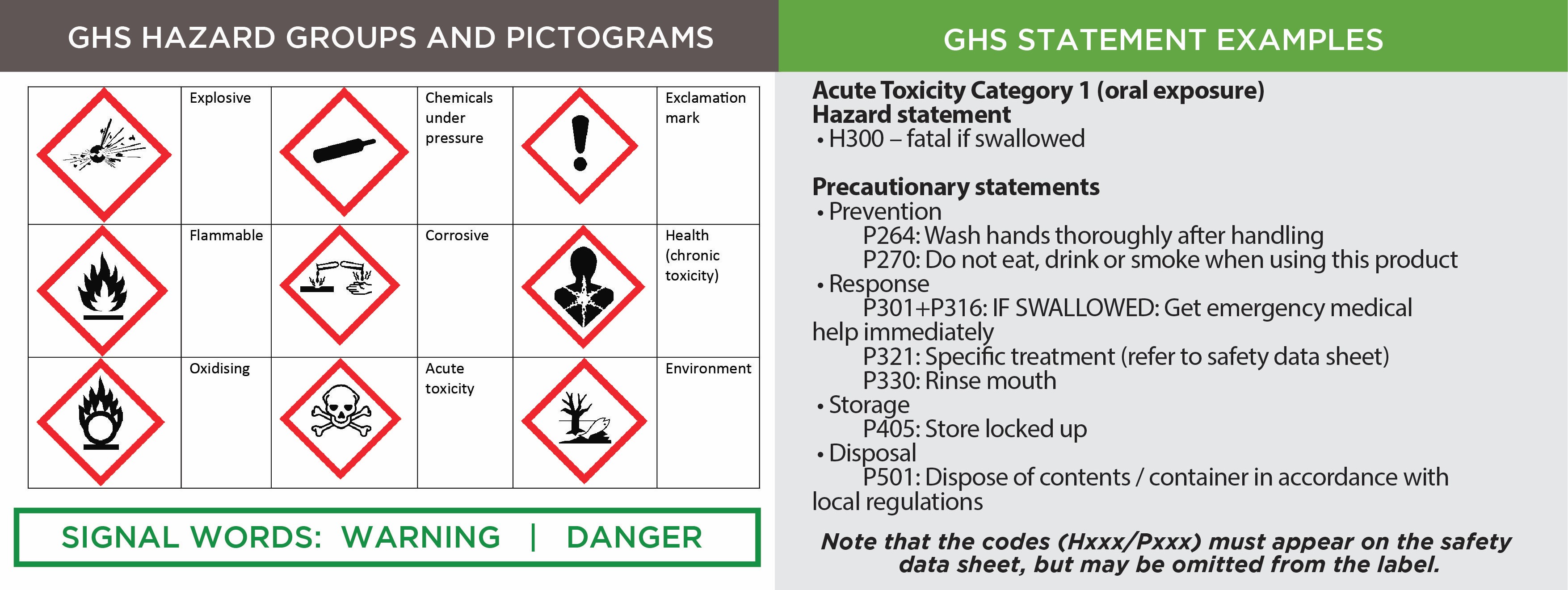
Figure 4: Example of the hazard pictograms, hazard statements and precautionary statements used when classifying and labelling an agricultural remedy according to GHS.
Table 3: Noticeable changes to the labels of agricultural remedies between the WHO recommended classification of pesticides by hazard and the GHS
- The acute toxicity of the active ingredient(s) is used to classify the remedy.
- Only acute toxicity is considered.
- Only oral and dermal exposure is considered for acute toxicity.
- A colour band with precautionary pictograms and a word describing the acute toxicity of the product is included on the front panel of the label to communicate the potential hazards associated with the remedy.
- All ingredients in the formulation are used to classify the remedy.
- Acute toxicity is considered along with chronic toxicity, as well as other health hazards, physical hazards and environmental hazards.
- Apart from oral and dermal exposure, exposure by inhalation is also considered for acute toxicity.
- Hazard pictograms, hazard statements, precautionary statements and a signal word is used to communicate the potential hazards associated with the remedy.
Safety Data Sheets are produced for all substances and mixtures which meet the harmonized criteria for physical, health or environmental hazards under the GHS and for all mixtures which contain ingredients that meet the criteria for specific chronic hazards in concentrations exceeding the cut-off limits provided in the GHS.
These documents are no longer referred to as Material Safety Data Sheets (MSDS), but merely as Safety Data Sheets (SDS). Safety Data Sheets as composed under the GHS has a standard format, providing information on the chemical under 16 headings:
- Identification
- Hazard(s) identification
- Composition/information on ingredients
- First-aid measures
- Fire-fighting measures
- Accidental release measures
- Handling and storage
- Exposure controls/personal protection
- Physical and chemical properties
- Stability and reactivity
- Toxicological information
- Ecological information
- Disposal considerations
- Transport information
- Regulatory information
- Other information
It is important to read and understand all the information provided in the SDS before using a hazardous chemical.
The degree of a chemical’s capacity to harm depends on its intrinsic properties, i.e. its capacity to interfere with normal biological processes, and its capacity to burn, explode, corrode, etc. The concept of risk or the likelihood of harm occurring, and subsequently communication of that information, is introduced when exposure is considered in conjunction with the data regarding potential hazards. The basic approach to risk assessment is characterized by the simple formula:
hazard x exposure = risk
Thus, if you can minimize either hazard or exposure, you minimize the risk or likelihood of harm occurring.
The GHS’s aim is to communicate the inherent hazards of the chemical, and because of these hazards, there are certain risks involved with working with the product, but these are mitigated if the label instructions are followed. Just because a product is hazardous, does not mean it cannot be applied safely. A vehicle, for instance, can also be a hazard if you consider the number of accidents on the road, but we don’t just ban vehicles altogether because of this. Instead, we mitigate the risk by wearing a safety belt, adhering to the speed limit and following other road safety regulations. The same logic applies when working with hazardous chemicals, which is why understanding the product label and safety data sheet is so important. And remember, any application of a crop protection product in any manner other than the label instructions is a contravention of the law, so do the right thing and make sure you, and any person working with you, know exactly how to use these products safely and responsibly.
For more information on the GHS classification procedure, hazard statements, precautionary statements, pictograms and signal words, Click here
 PDF Document
PDF Document